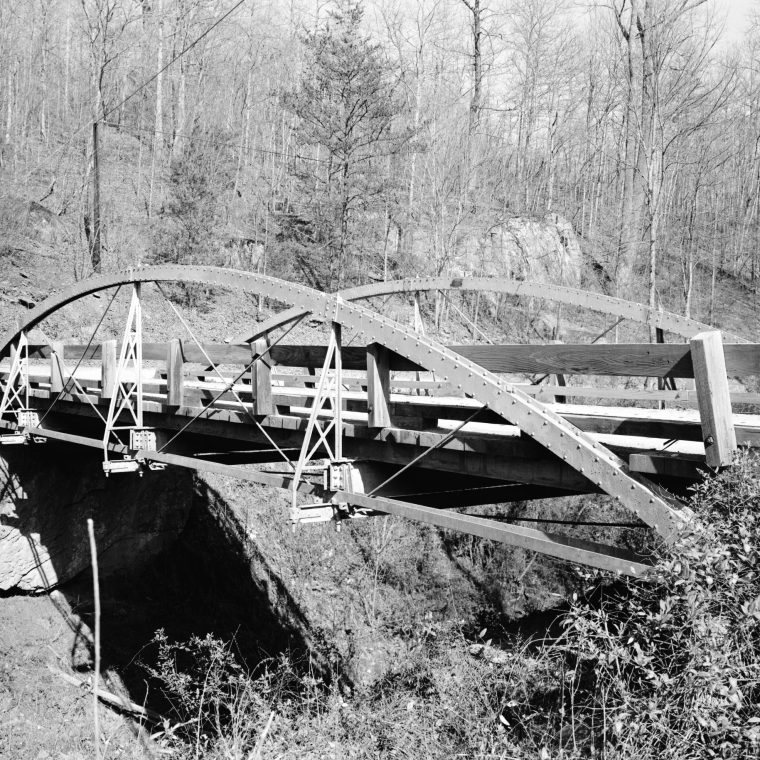That little bridge from 1878, over the Roaring Run in Bedford County, Virginia, is still there and is on the National Register, so with a little luck it will stay there. It’s 55 feet long and 12 feet wide, so it’s not particularly surprising that it is a pony truss: a through truss that short would be abnormally tall. The box-section top chord of each bowstring truss is built up of two wrought-iron channels and two plates; the bottom chord is simply a pair of wrought-iron flat bars. There are four panels per truss with rod x-bracing; the deck beams are supported at the panel points. All pretty normal. The details are, in my opinion, nicer than average and worth a look. First, the connection of the hangers and x-bracing to the top chord:

Back in those pre-standardization days, you could take the end of a square-section hanger, turn it round on a lathe and then cut threads in to take a nut. The nuts on the ends of both the vertical hanger and the diagonal brace rod rest on cast-iron connectors. Those pieces are basically very big washers, with the diagonal’s connectors cast to rest at an angle. Here’s a view that shows the hangers and the lower connections:

The deck beams sit on top of the lower-chord bars but there’s a cast iron bracket here too, most clearly visible as the curved metal in line with the hanger and right below the lower chord. The most clever detail is the way that the hanger is itself a miniature truss to provide lateral bracing to the top chord.

In short, even with a bridge not very much different than hundreds of other truss bridges, there was room for a good designer to leave their mark. The details reflect the technology of the time: no welding was possible, but custom shapes could be made in cast iron and custom connections could be made by altering wrought iron.
As a semi-related note, the current location is not where the bridge was built. It was built over another small creek and moved in the 1930s. The fact that all of the major connections were simply nuts threaded onto the ends of hangers and bracing rods certainly made disassembly and reassembly easier.




Permalink